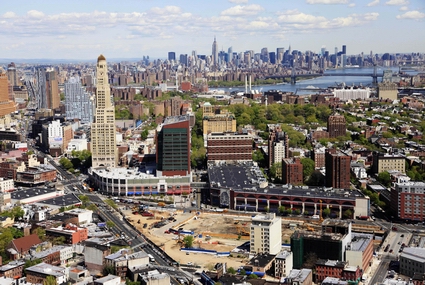
High Court Denies Cert in Case To Kill Rent Stabilization

Rent Regulation Here to Stay in Brooklyn
By Samuel Newhouse
Brooklyn Daily Eagle
and The Associated Press
NEW YORK — Yesterday the U.S. Supreme Court refused to hear an appeal from a Manhattan couple seeking to end rent-stabilization laws in New York City, including in Brooklyn and the other boroughs.
James and Jeanne Harmon had lost earlier court attempts to get the laws thrown out, the most recent of which was a decision last year by the 2nd U.S. Circuit Court of Appeals in New York City. The high court refused to review that decision.
The couple inherited a building that James Harmon’s parents bought in the 1940s near Central Park on Manhattan’s Upper West Side. Three of the rent-stabilized apartments have had tenants or their family members there for years.
“New York City’s Rent Stabilization Law (RSL) has forced the Harmons to lease apartments permanently to three tenants-in-possession for over 90 tenant years (and their designated successors) without regard to financial need,” Harmon wrote in his complaint.
The Rent Stabilization Law of 1969 was originally predicated on a housing emergency “created by war, the aftereffects of war and the aftermath of hostilities,” although that was changed in 1974 to being based on the city’s “vacancy rate.”
Since 1969, the stated goal has been “the transition from regulation to a normal market of free bargaining between landlord and tenant,” Harmon quoted the legislative documents.
“In all that time, the RSL has not achieved its stated objectives,” Harmon wrote.
Harmon’s building has six apartments, three of which are rent-stabilized, and their tenants pay about 59 percent of market rate. The building has been his family’s home for five generations and six decades.
According to the complaint, lower courts told Harmon that the law was against him, that rent stabilization is indefinite and that he can either sell the building or demolish it to get rid of his tenants. The building is in a historic district and cannot legally be demolished.
Harmon has also been in litigation in Housing Court for over two years trying to get one of his rent-stabilized tenants to vacate an apartment so that Harmon’s grandchild can move in.
Half of the city’s 2,092,363 rental units are subject to rent stabilization, and the estimated $4 billion cost is borne by market-rate tenants, Harmon argued, writing that market-rate rents would be 15 percent lower without rent-stabilization laws.
“Contrary to popular myth, the RSL is not targeted to help the needy, and here it does not. A person could make millions of dollars annually and still qualify for a rent-stabilized apartment. The RSL is not about affordable housing. It is all about luck … a racket in which property owners and market-rate tenants always lose….and that is a matter of common knowledge,” Harmon wrote.
Harmon, an attorney, complains that one of his rent-stabilized tenants even bought a second home on Long Island in 1991.
One person subletting a rent-stabilized apartment at Harmon’s home was featured in a 2000 New York Times article, where they describe the one-bedroom apartment with a spacious terrace renting at $1,190 a month as “practically free.”
Harmon’s immigrant grandparents bought the building in 1949, sold it to Harmon’s parents in 1953 and 16 years later it became subject to rent stabilization. In 1994, Harmon inherited the building when his father died, as well as three tenants in possession of rent-stabilized apartments in the building.
In 2006 and 2009, the City Council reaffirmed rent-stabilization laws. Before the 2006 hearing began, City Council Speaker Christine Quinn promised a “fun-filled hearing” intended “to make sure we are not losing rent protected units … [and] renewing intact, with no weakenings, our rent protection laws of the city of New York,” Harmon quotes from City Hall transcripts.
The high court’s refusal to hear the case was met with mixed reaction.
“We are deeply disappointed that the United States Supreme Court did not accept what we believe to be relevant and legitimate property rights concerns of all New York City rent-regulated property owners, who have endured 70 years of rent regulation in one form or another,” said Joseph Strasburg, president of the Rent Stabilization Association, a trade group that represents building owners.
New York City officials were pleased.
“Rent regulation in New York City has a long history, and the court properly left it to elected state and city officials to decide its future,” said Alan Krams, senior counsel in the city’s law department.
Leave a Comment
Leave a Comment


